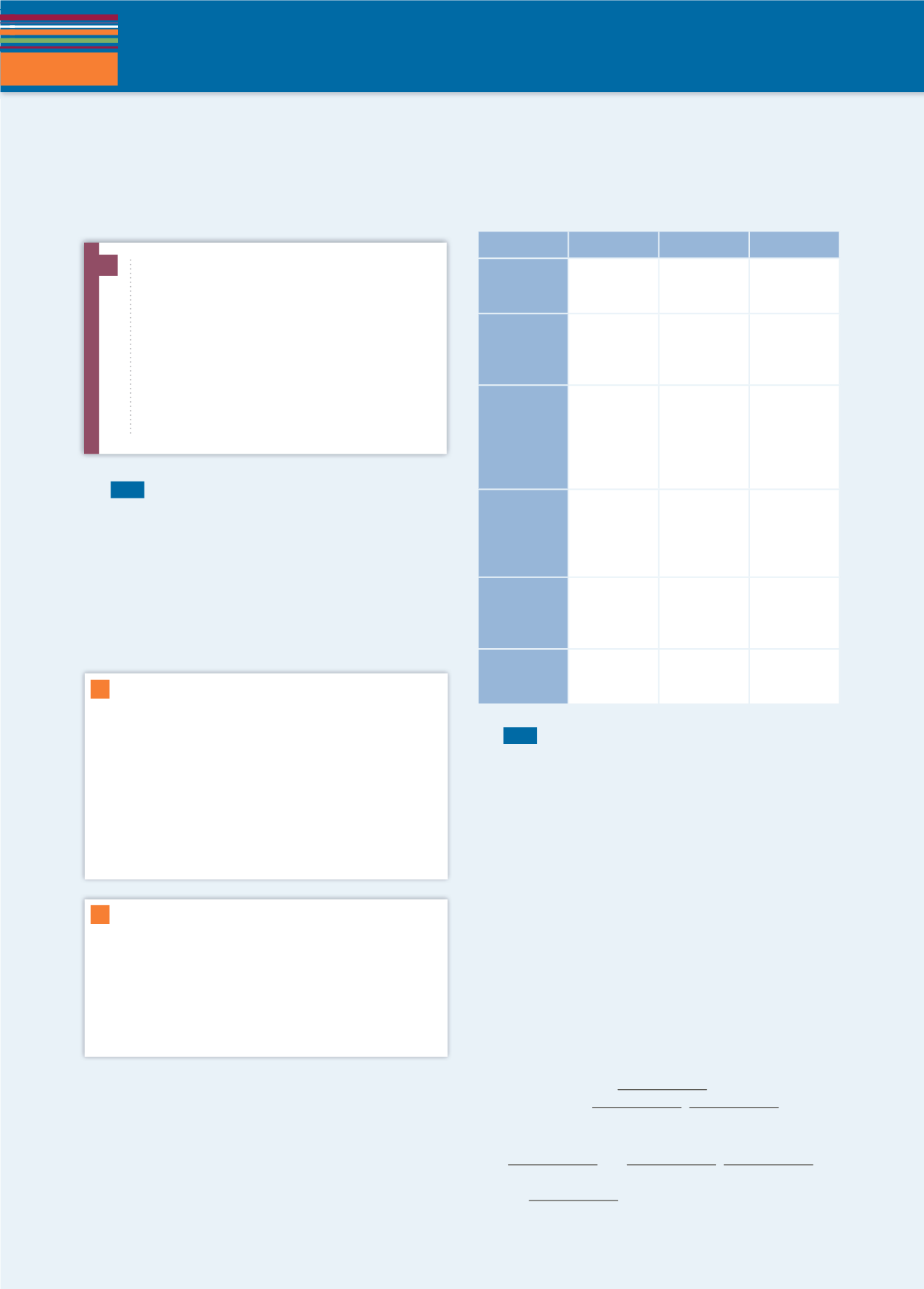
STUDY ANDWRITING SKILLS
124
12.5
STUDY SKILLS
SUMMARISING
1
Read the extract from a writing guide about
summarising. What are the most important things to
remember when you summarise?
3
Which pieces of information are in the lecture and
which does each writer use in making the summary?
Put ticks (
ü
) in the appropriate places in the table.
Look at Audio script 12.4 on page 175 to check
your answers.
Lecture
Summary A Summary B
1
Gives the
name of the
speaker.
2
Gives the
main topic
(home
security).
3
Gives the
order in
which the
information
is/will be
presented.
4
Points out
that people
don’t always
use safety
chains.
5
Lists the
methods
for creating
security.
6
Finishes
with a
conclusion.
4
a
12.5
Listen to a lecture on car security and make
notes. Use these headings.
• Topic • Main points • Conclusion
4
b
Use your notes to write a summary. Remember to
use only the main points and note if there is a conclusion.
WRITING SKILL
A CAUSE AND EFFECT ESSAY
5
Read the essay on the causes of world poverty quickly
and identify the three main causes of world poverty.
6
Read the essay again and outline the structure of
the essay.
7
Cause and effect
Underline all the words and
phrases in the essay that refer to cause and effect and
complete the two statements below.
Some of the words and phrases we use to explain the
effects of a cause are:
,
as a consequence,
consequently
,
so
,
,
.
Other words and phrases are used to introduce
the factors that are responsible for a cause,
e.g.
,
as
,
,
,
one reason why ...
,
one of the most important reasons
why ...
,
,
the main reason why …
.
You often need to
summarise
something
you have read, heard or seen.
In each case you
should pick out the main points. If you need to
summarise something written, for example an
article or an extract from a book, it is important
to use your own words to express the ideas. After
writing a summary it is a good idea to read the
original again to make sure you have not missed
any key points. A summary is not notes. It is a
shorter version of the original text.
2
a
12.4
Listen to part of a lecture on home security.
What does the speaker say about the following?
1
windows
2
notes
3
ID cards
4
safety chains
5
burglar alarms
2
b
Read two sample summaries of the lecture. Work
with a partner to decide which summary is better.
On the topic of home security, the expert mentioned
a number of methods to protect you and your home,
ranging from methods that cost nothing to some that
are quite expensive. The methods, from the cheapest
to the most expensive, were: keeping front doors and
windows closed; not leaving signs that you are not at
home; asking for identification; fitting window locks;
installing and using a safety chain on the front door;
fitting more secure locks to all doors; and installing a
burglar alarm. Using these methods will prevent most
burglaries. [91 words]
There are a number of methods you can use to
prevent security problems in your house. You can do
simple things like closing your windows and putting
a security chain on the front and back door or you
can put plenty of locks on the windows and install a
burglar alarm that makes a lot of noise if someone is
trying to break into the house. Never let anyone into
the house unless you know them well. [76 words]
a
b
2
c
Listen to the lecture again. Work with your partner
and read either Summary A or Summary B while you
are listening. Check that the points in the lecture are
covered in the summary. Compare with your partner
and decide if your original decision about the better
summary is still true.
S


